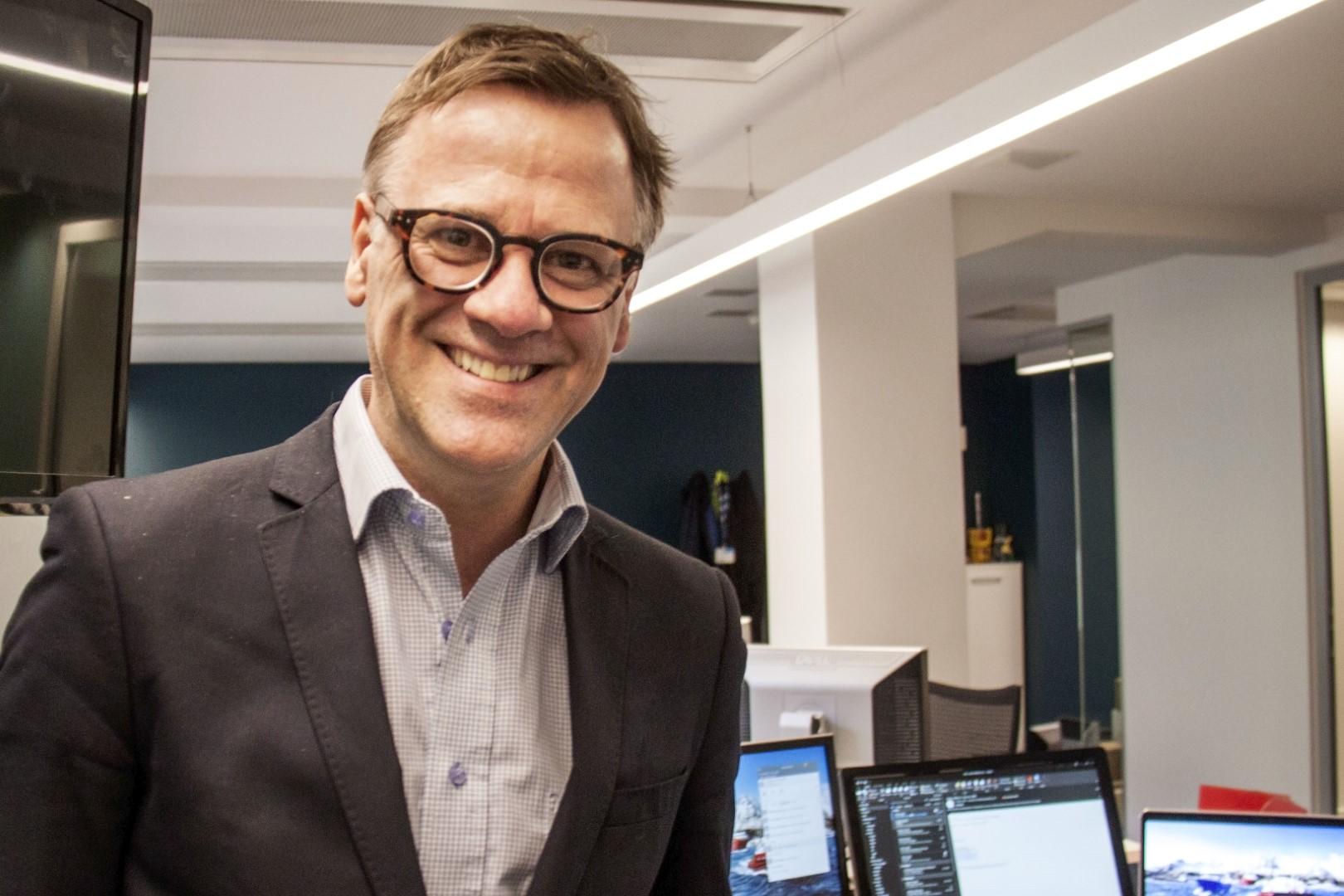
- July 18, 2025 4:23 pm
- California

What happens when you combine the powers of a pioneering visualization company with a handful of experts specializing in subsea oil and gas exploration and production? You get a company with truly revolutionary technology that addresses challenges found in both the sub sea domain and in the modern workplace.
FutureOn was spun out of Xvision in 2014. Since then they have been developing software that helps oil and gas companies control costs, and manage resources better while getting to first oil faster.
In an article by Elaine Maslin of Offshore Engineer, according to Oil & Gas UK’s latest Tech Insights report, data and digital solutions are finally becoming an integral part of the asset lifecycle. One of the largest areas where they’re applied is facilities management, but what about the design phase? Elaine Maslin takes a look at two approaches.
It’s an area ripe for innovation. According to Norwegian digital company FutureOn’s Customer Success Manager Gregor Deans, digitalization can reduce up to 70% of the engineering hours in field development. Much of that is in lead time reduction in the planning and design phases, with a potential for 30-80% reduction, Deans told the Underwater Technology Conference (UTC), held in Bergen and online earlier this year.
But it’s not just about time to first oil. Dubai-based engineering and fabrication firm Lamprell and Swiss engineering simulation company Akselos have shown that the amount of material needed for an offshore wind jacket foundation can be reduced by 30%, using digital twin technology. Lamprell has been using the same technology to reduce weight in oil and gas foundations by 10%.
FutureOn’s FieldTwin Design product, offered as software as a service (SAAS), is a platform that brings together a wide range of data sets, from bathymetry to reservoir data and well trajectories to pipeline data, into an environment that engineering teams can use.
Lundin Energy has been using the service on early phase subsea engineering work to “quadruple efficiency” and improve the quality of engineering outcomes, says Tom Widerøe, Lundin’s chief engineer subsea, who was also a speaker at UTC.
He says that efficiency has largely been gained by separating data from applications, so that there’s a “single source of truth” for data, and then applying web-based APIs within the FieldTwin environment to run any workflows required.
For early-phase design, where Lundin has a case book to look at different design cases, which can be anywhere from 10-20 to several hundred, this has helped ensure they’re all kept up to date when any inputs change, such as oil price and production profiles. “Until recently, this has been a very manual process, with little time for iterations,” he told UTC. “Similar data is residing within different applications and different companies. Time and costs associated with maintaining and updating this data are significant. However, new tools and new working methodologies are now disruptively changing the way we work with field developments.”
Looking back to 2018, a case would be developed based on data from the reservoir and drilling departments, a whiteboard drawing of a field layout would be created, then there would be a process to see if there’s anything that could be done to optimize it, Widerøe says. Suppliers would also be brought in to support this work. Sketchup (3D design software) would then be used to create a field layout, where the wells are, how long the pipelines are, etc. Then a manual process, in Excel, would begin, to cost the project, as well as work on flow assurance, freespan calculations, rocking dumping requirements, etc., that would be done internally and externally in specific simulations, e.g. Olga, etc.
“It’s a manual process that takes a lot of time and when there are more than 200 case books to look into. It takes a lot of time, so there’s little time for iterations. There’s similar data residing within different applications, data residing at contractors, quality is questionable, it’s difficult to keep track of changes, and you’re reliant on individuals. The data residing within applications at different companies has to be manually updated in each place,” he says.
Using a platform like FieldTwin (which Lundin has supported the development of), the data is separated from the applications to create a single set of data, stored in the cloud, that all the involved platforms and digital tools can access through an API, with automated dataflow across applications and companies, and automated generation of a standardized case book with a full track of history, says Widerøe.
“A significant advantage of that data being stored in the cloud and accessible in the cloud via the API is allowing integration of other programs, so I can easily do flow assurance, or my OrcaFlex calculations through FieldAp (FieldTwin) applications.”
It’s all also visualized and contextualized with imported GIS, bathy, or license maps from the Norwegian Petroleum Directorate, which gives the operator an overview of licenses, pipelines in the area, or any other nearby structures.
“If I change a wellhead location in FieldAP, then the pipeline geometry gets updated,” says Widerøe. Integrated applications, run in FieldAP, are also typically updated on the fly, while external applications, maybe free-span calculations, will download the latest pipeline geometry from the cloud data to perform calculations, and then a new case book is automatically generated, he says.
“We see we’re able to do double the number of cases, using half the time. And due to better transparency and standardization and increased communications, the quality of the work will increase significantly.”
Deans says some challenges are being worked on through industry joint industry projects and workgroups. The Data Liberation front, coined by Aker BP/Cognite in 2018, to encourage easier access to data, is one step, he says, but data socialism is also needed, to make collaboration easier.
Digital twin partnership deal
The Oslo-headquartered company has struck a deal with Kongsberg Digital (KDI), the digital division of the Kongsberg Group.
Designed to strengthen its position as a leading international digital twin software provider, the partnership brings together FutureOn’s FieldTwin and KDI’s Kognitwin platforms.
In doing so, it aims to support a comprehensive approach for designing, building and operating digital twins for energy projects.
A digital twin is a virtual representation of a physical object that gives engineers and developers a better understanding of how projects will look.
Central to the partnership will be a focus on energy transition through the development of digital twins for renewable schemes.
This will include emerging sectors such as offshore wind, green hydrogen and carbon capture and storage (CCS) solutions.
Many oil and gas operators are moving into such spaces as part of their diversification strategies.
This new partnership fully complements FutureOn’s existing partnership with Bentley Systems (NASDAQ: BSY) and its iTwin® platform.
It also positions the oilfield software company as a leading provider of integrated digital twin technology.
To support the alliance, KDI will invest a total of £3.3 million in a single tranche investment – it joins Bentley Systems as a strategic minority investor.
Earlier this year, Accenture listed digital twins as a top-five technology trend for 2021.
The technology is widely recognised as an enabler for emissions reduction and decarbonisation.
This interest has been reflected in FutureOn’s customer uptake, with more than 15 leading international energy companies now using its digital twin technology.
Pål Roppen, chief executive at FutureOn, commented: “This new strategic partnership and investment from Kongsberg Digital enables us to continue providing streamlined and effective operations for our valued customers.”
“We are excited to bring together the powerful capabilities of KDI’s Kognitwin alongside our already strong partnership with Bentley Systems and its iTwin platform. This positions our award-winning FieldTwin solution as one of the leading integrated digital twin solutions in the global energy industry.”
FutureOn is planning to use data-driven, cloud-based platform solutions to help companies to hit their net zero ambitions.
Hege Skryseth, president of Kongsberg Digital, added: “We are very excited to contribute with our Kognitwin platform and invest in this forward-looking project together with Bentley Systems. By integrating our solutions with FutureOn’s FieldTwin platform, we will support energy innovation at the core and function as a digital accelerator of the energy industry’s shift towards net zero.”
Innovative visual workflow tool
The company recently launched Collaborate – a digital project sharing forum, which offers open communication and engagement, enabling quick adaptability and accountability for teams across the energy sector and supply chain.
More than a data visualisation tool, Collaborate brings multiple contractors together in one space, benefiting operators and project teams by ensuring accessibility, integrity and real-time updates on integrated projects.
The latest addition to the company’s arsenal enables teams to problem solve complex challenges as they appear. The data analysis capabilities, multiple perspectives and the shareability of assets enables enhanced forecasting and troubleshooting for projects.
This means that both operators and engineering, procurement, and construction team members work on the same shared data model while ensuring secure granular access and control of users and data for all.
Collaborate is an optional application which can be added to the company’s award winning FieldTwin software – a cloud-based digital platform which creates and maintains a digital copy of a physical asset, enabling maximium asset performance and value. This technology acts as the foundation for the collaborative visual workflows between multiple stakeholders.
Last year, the Energy Systems Catapult and Offshore Renewable Energy Catapult launched an Offshore Energy Digital and Data Strategy taskforce, with the aim of creating a digital and data strategy spanning oil, gas and renewables. Collaborate is a prime example of digital innovation that will go towards accelerating and embedding technologies and digital solutions across the energy industry.
Jostein Lien, Senior Vice President of Product at FutureOn, commented, “By establishing a two-way secure connection between stakeholders using the platform, we have enabled a real-time collaboration opportunity. This will be a revolutionary tool for our customers and their stakeholders as they manage projects around the world. “We are seeing ambitious goals outlined for reductions in personnel on board, emissions related travel and more efficient technology as we progress toward net zero. Collaborate is the perfect project management tool to enable this, and we look forward to rolling it out to our existing and new customers.”
Integrated technical and digital service to operators
FutureOn formed a strategic collaboration with global consulting and engineering leader Wood, to provide an enhanced service to its client base of global asset operators.
Wood’s expert technical services specialising in the early field development studies for subsea and ocean-based energy systems, will integrate with FutureOn’s unique field design applications, and proven API-centric collaboration platforms, resulting in significant efficiency gains across the design phase.
Having previously trialled FutureOn’s technology in 2019, the latest agreement will see Wood provide technical and integration services to operators using FutureOn’s software. In addition, the company will offer the software as part of its suite of technical services to new and existing customers across the world.
FutureOn’s open and collaborative approach to field design is based on data-rich 2D and 3D visualisations. The inclusion of metadata on assets and costs will enable reliable early-stage production and financial forecasts. It also provides a real-time visual blueprint of a field development allowing project teams and contractors to collaborate remotely, development of options at pace and a shared project workspace for timely delivery.
Looking to the future, Wood and FutureOn are committed to supporting the world’s major asset operators’ efforts to build a sustainable economic recovery from their existing infrastructure, optimising asset performance and extending productive field life whilst accelerating the move towards net-zero. The agreement will support these initiatives by combining the power of FutureOn’s FieldTwin technology for the streamlined design of renewable energy systems with Wood’s Automated Design product for pipeline systems that address key aspects of the global net-zero challenge.

" This new strategic partnership and investment from Kongsberg Digital enables us to continue providing streamlined and effective operations for our valued customers. "
Pål Roppen
Co-founder and CEO
FutureOn